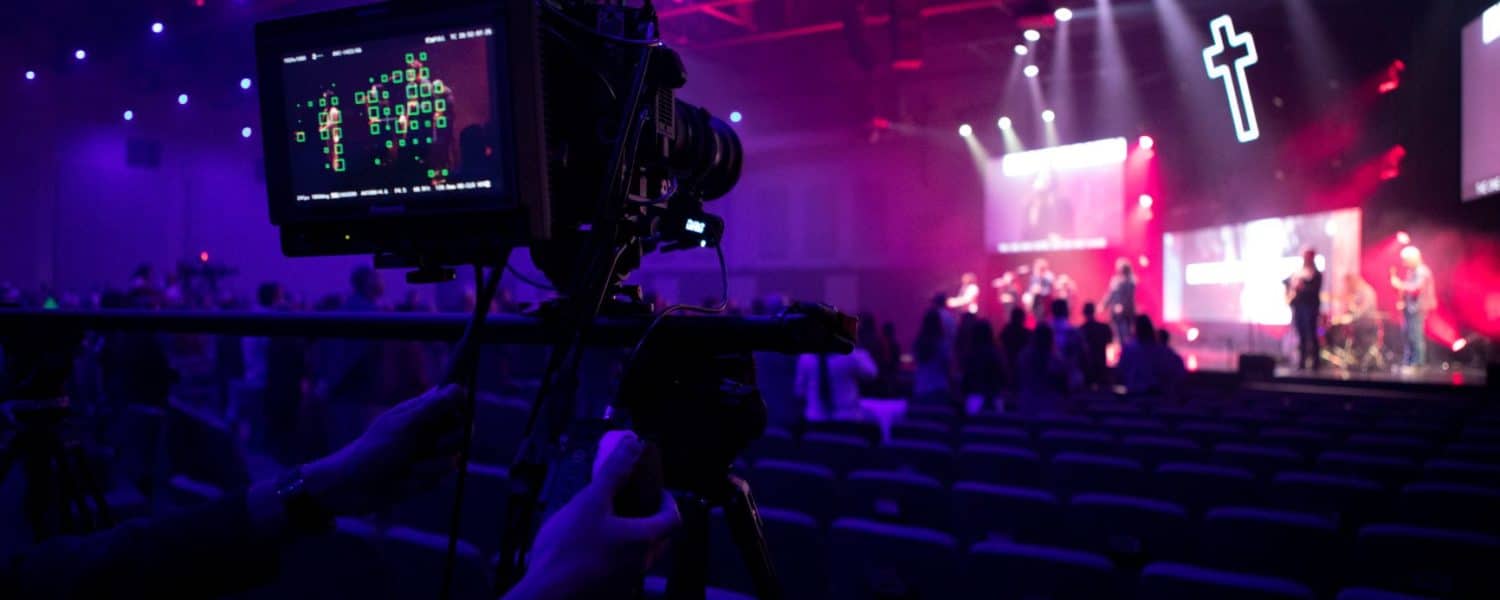By Stephen Milley
In the digital era, audio and visual technology are a must-have for worship venues to ensure – and increase – congregation attendance. From music to scripture to sermons, these venues have a variety of inspirational content to relay to patrons, but often, houses of worship don’t have the tools needed to effectively do so.
Using audiovisual (AV) technology such as projectors, displays and cameras, the delivery of this message can be facilitated. However, with the vast developments in technology over the past decade, worship leaders can be overwhelmed by the AV technology options available to them.
In order to choose the right AV technology to fit a congregation’s needs, houses of worship must first determine what their goals are and what messages they are trying to convey. From there, these venues must examine a number of factors, which include size of sanctuary and congregation; communication needs; financial budgets, including whether the technology will be operated by volunteers or hired technicians; and space limitations.
1. The Size of the Sanctuary
Sanctuary size can help as even some small sanctuaries may invest money to determine the type of technology a house of worship should implement. For any technology deployment, houses of worship should first consider their audio needs. If parishioners can’t hear the pastor giving a sermon or the choir singing a hymn, they likely will not have an inspirational experience and might not want to return.
Because attendance has an impact on worship venues, this is a crucial consideration. Houses of worship should begin any technology deployment by first meeting with an acoustician to determine needs for audio, microphones and speakers.
Once audio needs have been determined, houses of worship move onto lighting considerations. Select venues employ stage production managers to determine lighting needs, including weighing the benefits of traditional incandescent lighting over LED lighting. Many spaces that have weekly worship services choose LED lighting for production to minimize the costs of replacing bulbs and the heat problems associated with conventional lighting.
After lighting, projection is another important technology to consider. The larger a congregation is, the more projection technology is needed to ensure each member can see and engage with the sermon.
Environmental projection mapping offers stunning visuals which engage and inspire worshipers. As the sanctuary size increases, cameras are introduced for IMAG (image magnification). Worship leaders use cameras to shoot the sanctuary, projecting captured images to ensure the entire congregation has an excellent, unobstructed view of the service.
2. Communication Needs
Every worship venue’s communication needs are different. Some venues have classrooms connected to them, others have so many members that they need to stream services to additional locations within the venue as well as remote locations. These requirements will also have an impact on the decision of which technology to deploy.
Regardless of sanctuary size or seat placement, digital signage allows venues to distribute important information to each member of the congregation. Larger congregations will use displays to share church information, such as weekly events, an agenda of the day’s activities or what’s on the hospitality menu following a service. Most commonly, displays are placed in the gathering areas and fellowship rooms, but they can also be deployed throughout the area where the service is held.
Some venues will also choose to stream their content to satellite campuses using a combination of camera and audio equipment. In these cases, displays can be used to view the service along with projection technology, allowing important information to be accessible to everyone.
3. Budget Restrictions
Houses of worship are donation and community-driven, which often means they have tight budgets and run on volunteer work. When considering an AV solution, many worship venues must determine the cost associated with implementing new technology while ensuring they do not overextend their budgets or volunteer workforce.
In addition to standard sanctuary technology such as cameras, displays and projectors, worship facilities also use switchers, routers, tripods, recorders and more. An important factor in choosing the best solution for a space is its ability to work with other technology. If a solution can be integrated into an existing system, it can not only help reduce costs, but also make it easier for volunteers to operate. This cuts down on the strain placed on worship venues to find skilled volunteers.
Similarly, it is important for worship venues to work with technology vendors that ensure their solutions are future-proof. Since it can be expensive to deploy an end-to-end AV solution in a house of worship, it is crucial to deploy technology that will be useful today and for years to come.
Facilities can use value engineering practices to ensure quality purchasing decisions. By taking a systematic approach identifying all needs, houses of worship can effectively scale their technology deployments based on operating cost, budget and what technology will meet their needs for the foreseeable future.
4. Space Limitations
Since many places of worship are set in older buildings, managing the space to fit modern needs becomes a challenge. Flexible technology is crucial to ensuring the existing infrastructure is minimally disturbed.
Some projectors have 360-degree installation capabilities, which means they can be installed at any angle and still effectively project flawlessly onto a screen. In worship venues with iconic statues, large columns and other permanent infrastructure, flexible and adjustable installation capabilities are critical.
Similarly, the existing IT infrastructure can be a challenge. For example, sharing network bandwidth with other technology in the facility can interfere with visual streaming, affecting the inspirational messages a house of worship is trying to relay to its congregation.
Auditing the existing IT infrastructure to determine where improvements or changes can be made will help create an uninterrupted service.
Investing in the Right Visual Solutions
AV technology is an extremely integral part of meeting today’s house of worship communications needs.
In order to make the best purchasing decisions for their venues, worship leaders must evaluate what their goals are when considering sanctuary size, available budget and infrastructure restrictions.
By examining each of these factors, worship venues will be able to invest in fully integrated visual solutions that will serve their communication needs for years to come.
Stephen Milley is group manager – business development for Panasonic, https://na.panasonic.com/us/audio-video-solutions.












